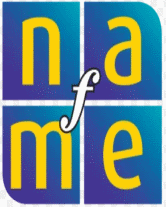Grades: 3-8
Subject areas: Music, History, and Math
Summary:
Students will explore ragtime music and gain an understanding of its development in relation to jazz. They will also investigate the historical events during the time the genre evolved. They will become familiar with the common form used in ragtime piano pieces (AA BB A CC DD) and the concept of syncopation. Students will understand that syncopation is an element in jazz music. They will listen to various ragtime compositions and become familiar with various composers of this genre.
Objectives:
- Students will listen to, analyze, and describe music.
- Students will gain an understanding of music in relation to history and culture.
- Students will gain experience in reading and notating music.
- Students will compose and arrange music within specified guidelines.
- Students will use the Internet to do research.
- Ragtime music
- Computer(s) with Internet access will be used for online activity and research.
- Construction paper, poster board or oak tag, markers, crayons and/or colored pencils scissors, glue sticks
- Available pitched and unpitched instruments
- Introduce the lesson with information found in the Interactive Timeline. Click on 1800 and share the information about history and music. This information will serve as a musical and historical foundation for the introduction and exploration of ragtime music.
- Discuss the following topics.
- To what are ragtime's traditional roots tied?
- What is syncopation?
- What was the common structure for a piano rag?
- Who were some well-known ragtime composers?
- Choose various ragtime musical selections to listen to. Choose one selection to listen to and help students identify the A, B, C, and D sections. Listen a second time and have students raise their hands when each section is heard.
- Distribute the art materials and have students create four different cards each to represent the A, B, C, and D sections of the music. These representations can be the letters A, B, C, and D or shapes or any artistic representation of the their choice that is suitable. After the students have created their symbols, have them cut and paste them upon the poster board squares.
- Play a ragtime selection and have students hold up their flashcards identifying the correct musical sections at the appropriate moments.
- Define the term syncopation and explain that is a major characteristic in ragtime music. (When short notes, ties, or rests are used to misplace the natural accents in music). Share a simple four bar rhythm pattern in 2/4 time. Have students clap, tap or pat this rhythm. Share a syncopated rhythm in 2/4 time and have student's clap, tap, or pat this rhythm. Allow as much time as necessary for students to perform the syncopation correctly and comfortably.
- Divide students into small groups and have them create short syncopated rhythm examples in various meters. These may written or improvised. Have them share them with the whole class on pitched and non-pitched instruments. If written examples are used have the students switch their notated syncopations with another group and allow them to play one another's.
- Explain that one of the tools musicians use to make jazz music is syncopation. Syncopation was derived from ragtime. Listen to examples of syncopation in jazz.
Assessment:
- Students should have completed all assignments and actively participated in all discussions.
- Teacher assessment of class discussion through observation and anecdotal notes.
- Teacher assessment of student's ability to identify musical form of ragtime through group flashcard exercise.
- Teacher assessment of students ability to demonstrate understanding of the concept of syncopation in small group creations.
Extensions and Adaptations
- If multiple workstations are available, have students break into small groups and reinforce their ability to play and write simple syncopated musical examples. Have them extend these examples into two by adding a steady ostinato part that is played on the beat while the syncopation is played with it. This can be done with any available music resources and would be an ideal experience to incorporate music sequencing and notation software.
- Explore the Web sites used within this lesson to further research and gain knowledge of the ragtime music.
Relevant U.S. National Standards:
Music
- Composing and arranging music within specified guidelines.
- Reading and notating music.
- Listening to, analyzing, and describing music.
- Understanding music in relation to history and culture.
History
Mathematics
Resources:
Jones, George Thaddeus. (1974). "Music Theory." New York: Harper & Row.

| Provided in partnership with NAfME |



